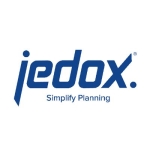As a company grows and expands into multiple regions with different currencies, the level of complexity increases. At that point, Oracle Planning and Budgeting Cloud becomes a better solution. Based on a company's revenue and size, there is a threshold where they need to transition to a better tool to handle the increased complexity.
The tool improves the organizational budgeting process in several ways. One significant aspect is the extensionable functionality it offers. To illustrate, consider a scenario where a company has factories in Mexico producing Volkswagen and Kentucky producing Ford.
When employees in Mexico input their budget and forecasts, they only see the relevant products and processes applicable to their location. Similarly, employees in Kentucky have access to data pertinent to their operations. This functionality streamlines the user interface experience by dynamically filtering information based on relevance. It eliminates the need for users to sift through irrelevant options, akin to the inconvenience of scrolling through a lengthy dropdown menu to select a state when a simple text entry could suffice. Having that capability essentially means that the system recognizes your location, like being in New York, and automatically presents relevant information.
I think it's pretty powerful for where they are right now. It fits the bill for people seeking a solution for planning and budgeting. And it probably fits the bill better than most products out there. One of the nice things about it is its power and versatility. Anything you can do in a spreadsheet, you can do in this product. It has all the power of a spreadsheet and fixes issues like security, data integrity, and the standard errors in spreadsheets. So, taking away the drawbacks of Excel and replacing them with good features is a fantastic capability they have. Most people who get these products previously created all their budgets and forecasts in Excel. The fact that it's the next step in evolution speaks volumes about their development.
The tool incorporates AI functions encompassing budgeting, forecasting, and transactions at the macro and micro levels. On the other hand, OneStream seems more focused on reporting, planning, and budgeting functionalities. Oracle Planning and Budgeting Cloud's approach seems more holistic, leveraging its ERP products, while OneStream focuses more on specific functionalities relevant to its product offerings.
The tool's interface is outdated. However, OneStream is easier to navigate.
The tool's customer service is fairly good. Outsourcing to India has taken some time to get up to speed, but they are now well-trained. Additionally, they have domestic senior resources, allowing for quick escalation of complex issues.
However, they can also concentrate on enhancing the process. This means that even though you may start with basic support, you can be escalated to higher levels with better solutions or more quickly, which I believe they have accomplished.
Every company is unique, with different growth strategies and trajectories. Some companies focus on acquisitions to grow rapidly, while others prefer organic growth, expanding into new markets gradually. It depends on the company's specific growth goals and how they plan to achieve them. For example, a company aiming to grow from $100 million to $1 billion in revenue in two years will require different strategies than one aiming to increase from $100 million to $200 million in the next year.
I rate the product a nine out of ten.



















